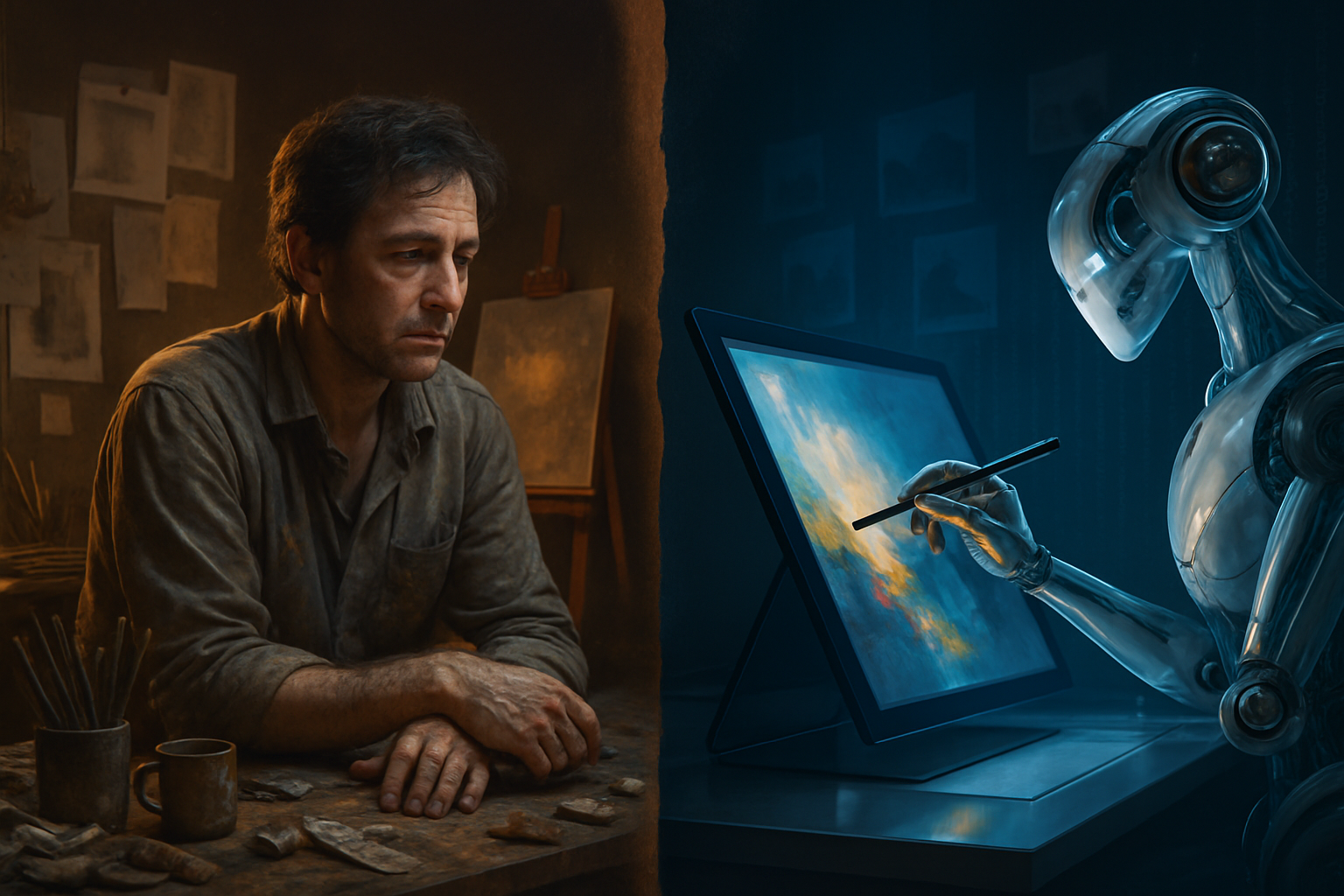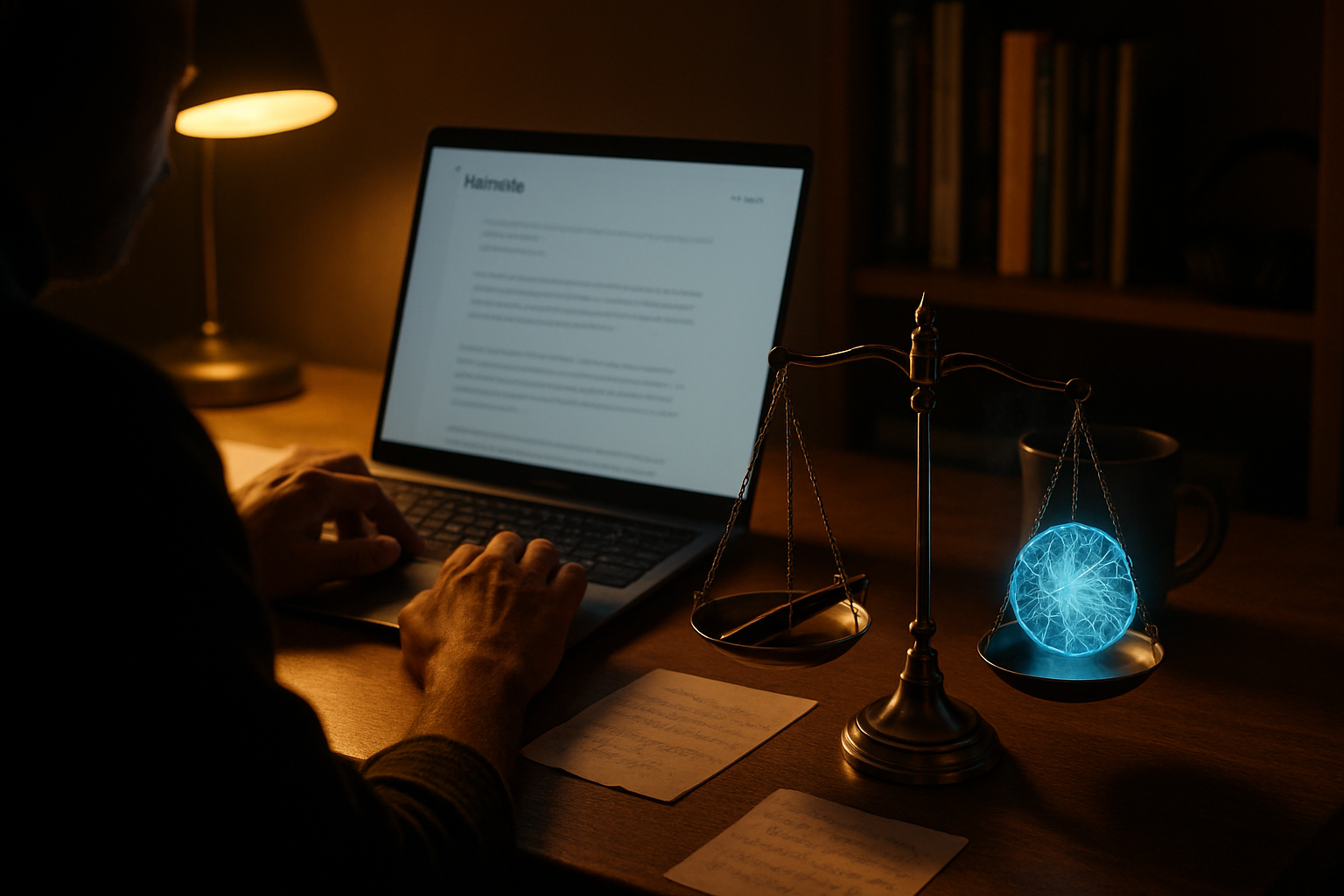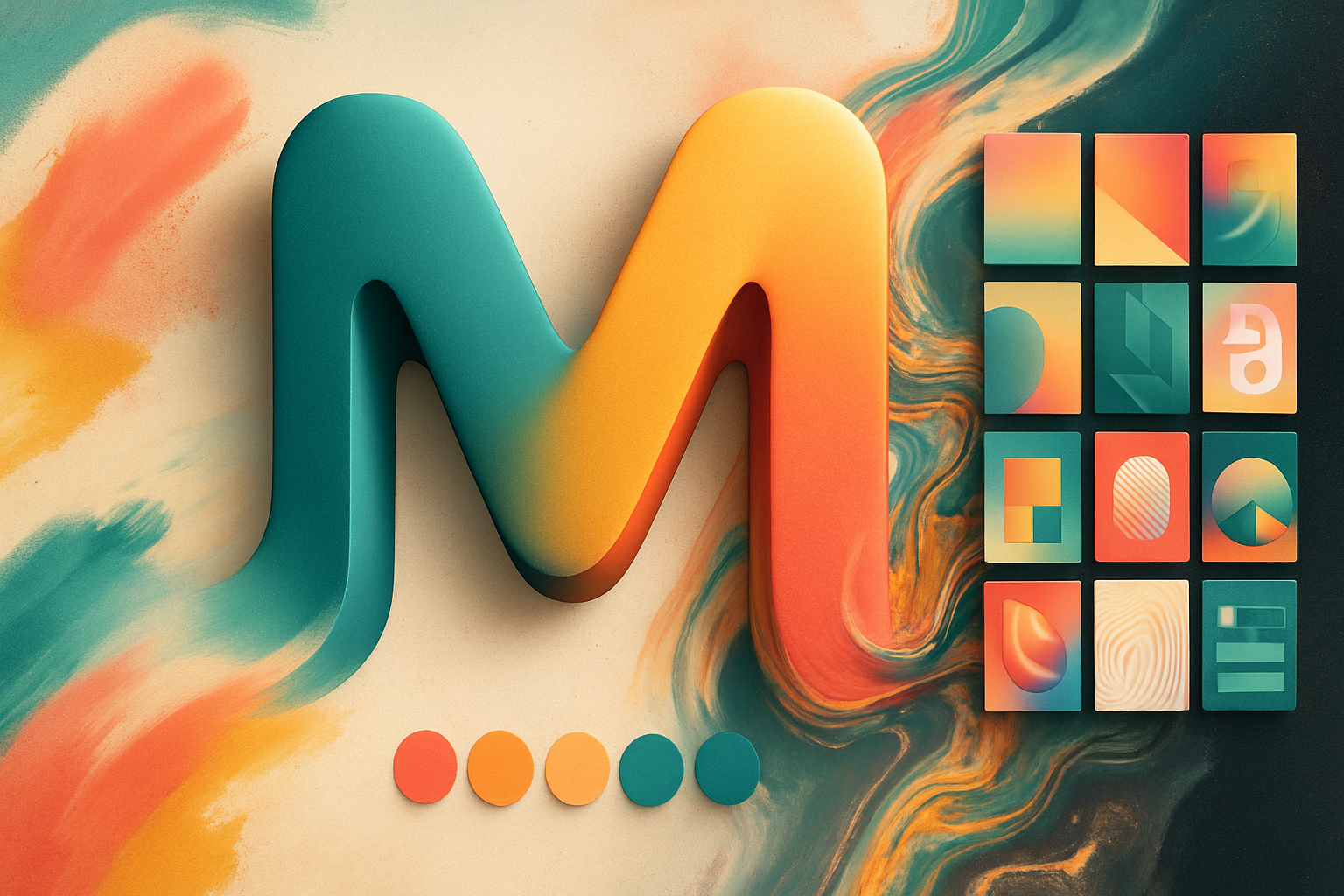· creativity · 6 min read
The Dark Side of AI Art: Ethical Considerations When Using MidJourney
A practical, ethics-first guide to using MidJourney for commercial work. Learn the legal risks, the effects on traditional artists, and concrete steps to use AI-generated art responsibly and fairly.

What you’ll get from this post
You’ll walk away knowing the real legal and moral risks of using MidJourney in commercial projects - and a clear checklist to reduce harm: how to evaluate copyright exposure, how to treat affected artists fairly, and how to build transparent practices clients and customers can trust.
This isn’t theory. It’s practical. Use it before you sell, pitch, or print.
Quick reality check: outcome first
AI image generators can speed design, produce concepts, and reduce costs. They can also expose you to copyright claims, ruin livelihoods, and damage your brand reputation if you treat the tool as a shortcut around consent and compensation. Know which side you want to be on. Then take the actions below.
How MidJourney (and similar models) create images - why it matters
MidJourney builds images by learning patterns from vast collections of images and their associated text. It does not “ask” every artist whose work it learned from. It uses statistical relationships to generate novel outputs that resemble features it has seen.
That process creates two core ethical problems for commercial users:
- Training-data provenance - Did the model learn from artists who didn’t consent? If so, using outputs can feel like benefiting from others’ unpaid labor.
- Similarity and derivation - Outputs can sometimes reproduce a recognizable style or even elements from a specific artist’s work - which may cross into copyright infringement.
For vendor details and terms, see MidJourney’s own documentation and policies: https://docs.midjourney.com/docs/terms-of-service
Copyright and legal exposure: the current landscape
Short answers first: legal risk exists. It’s not uniform. And it’s evolving fast.
Key points:
- Ownership of outputs - MidJourney’s terms grant certain commercial rights to subscribers, but those rights are not an absolute shield against third-party copyright claims. Read the Terms of Service carefully for what the platform licenses to you.
- Training-data suits - Artists have sued multiple AI companies for training models on copyrighted images without permission. Reporting on these cases is ongoing; follow reputable sources to track developments (for example, recent reporting by Reuters on artist suits against AI companies:
- Human authorship and registration - U.S. copyright practice is still sorting out the role of human creative input in AI-generated works. The U.S. Copyright Office has stated that works lacking human authorship are not registrable as traditional copyrights; material human contribution matters:
Put simply: a platform license may allow you to use and commercialize an image, but a third-party copyright owner (an artist whose work the model learned from) might still claim infringement. You want to avoid being the test case.
The human cost: how AI affects traditional artists
Economic harm - Many professional illustrators, concept artists, and commercial designers are seeing reduced demand for certain types of work and lower fees for quick ‘AI mockups.’ That drives down income for people who trained for years.
Attribution and consent - Many artists find AI outputs explicitly echoing their signature choices. They weren’t asked. That feels like a violation of moral rights, even where legal remedies are uncertain.
Workforce dynamics - AI shifts work toward people who can prompt and iterate quickly and away from craft-intensive practices. That reshapes what skills are valued and risks sidelining deep expertise.
Psychic harm - Beyond money, there’s a dignity issue. Artists who see their style reproduced without credit or compensation report anger and demoralization. This matters for communities and the cultural ecosystem at large.
Ethical frameworks you can apply before accepting a commercial brief
Use these quick moral filters when deciding whether to use an AI image commercially:
- Consent - Could any identifiable artist reasonably claim the output reproduces their work? If yes, pause.
- Compensation - Is there a way to fund or compensate creators who contributed (directly or indirectly) to the aesthetic you’re using?
- Transparency - Will you tell your client or end-user that the asset was AI-generated? If you hide it, you risk reputational and ethical harm.
- Harm audit - Could the image cause measurable economic or cultural harm to a group of creators? If so, choose a different approach.
These are simple tests, but they catch most high-risk cases.
Practical checklist: reducing legal and ethical risk when using MidJourney commercially
Follow this step-by-step process before you put an AI image into a product, ad, or paid project.
Read and document the license you have.
- Capture a screenshot or save the terms that applied when you created the image. MidJourney’s licensing differs by plan and by date; keep records. See: https://docs.midjourney.com/docs/terms-of-service
Avoid prompts that ask for the unmistakable style of a living artist.
- Prompts explicitly naming living artists or very specific copyrighted works raise the chance of claims.
Run a similarity check.
- Use reverse-image search to see if the output reproduces an existing image too closely.
Be explicit with clients.
- Inform them the work was AI-assisted, explain the license, and include indemnity clauses if necessary.
Consider hybrid workflows.
- Use MidJourney for ideation and hire an artist to refine and sign off on a final piece. This shares work and credit.
Keep an audit trail for prompts and iterations.
- Save prompts, seeds, and versions. That trail helps show human editorial input and responsible use.
Budget to compensate artists.
- If your work draws heavily on a recognized style, offer a fee or royalty to the communities affected.
Buy errors-and-omissions (E&O) insurance when scaling commercial use.
- Talk to a broker about coverage for IP claims involving AI-generated content.
Good alternatives and better practices
- License existing artwork directly. Paying rights holders removes a lot of legal and ethical friction.
- Use models trained on clearly licensed or public-domain data (CC0) where provenance is explicit.
- Hire artists for final deliverables and treat AI outputs as rough drafts or mood boards.
- Advocate for and support artist opt-out or licensing capabilities in model training pipelines.
Each of these choices trades off speed for trust. For many brands, the trust dividend is worth the extra cost.
Industry and regulatory trends to watch
- Lawsuits and settlements will clarify liability. Expect more case law defining when AI output infringes existing works.
- Disclosure requirements may become common - platforms and publishers could be forced to label AI-generated assets.
- Model-training transparency - lawmakers and regulators are pushing for datasets that document source licensing and opt-outs.
Stay informed. The rules you follow today may change - but reputational choices matter even when the law is unsettled.
A short playbook for ethically responsible use (one-paragraph summary)
If you plan to monetize AI art from MidJourney, do these five things: (1) read and save the platform license that applies to your output; (2) avoid prompts that mimic living artists without permission; (3) disclose AI use to clients and end-users; (4) keep a record of prompts and edits showing human creative input; (5) where your output benefits from a community of artists, share value - pay or commission human creators rather than undercut them.
Do that and you reduce legal risk. Do that and you preserve the creative ecosystem that made AI art possible in the first place.
Final thought - the strongest point
Legal compliance is necessary. Ethical action is decisive. If you want AI art to be a sustainable tool rather than a short-term advantage, choose transparency, consent, and fair compensation now. Respect isn’t an optional add-on - it’s the foundation of durable creative practice.
References and further reading
- MidJourney Terms of Service: https://docs.midjourney.com/docs/terms-of-service
- Reuters - coverage on artist lawsuits against AI companies: https://www.reuters.com/legal/artists-sue-midjourney-stability-ai-deviantart-over-ai-art-2023-06-01/
- U.S. Copyright Office - Artificial Intelligence and Copyright: https://www.copyright.gov/artificial-intelligence/



